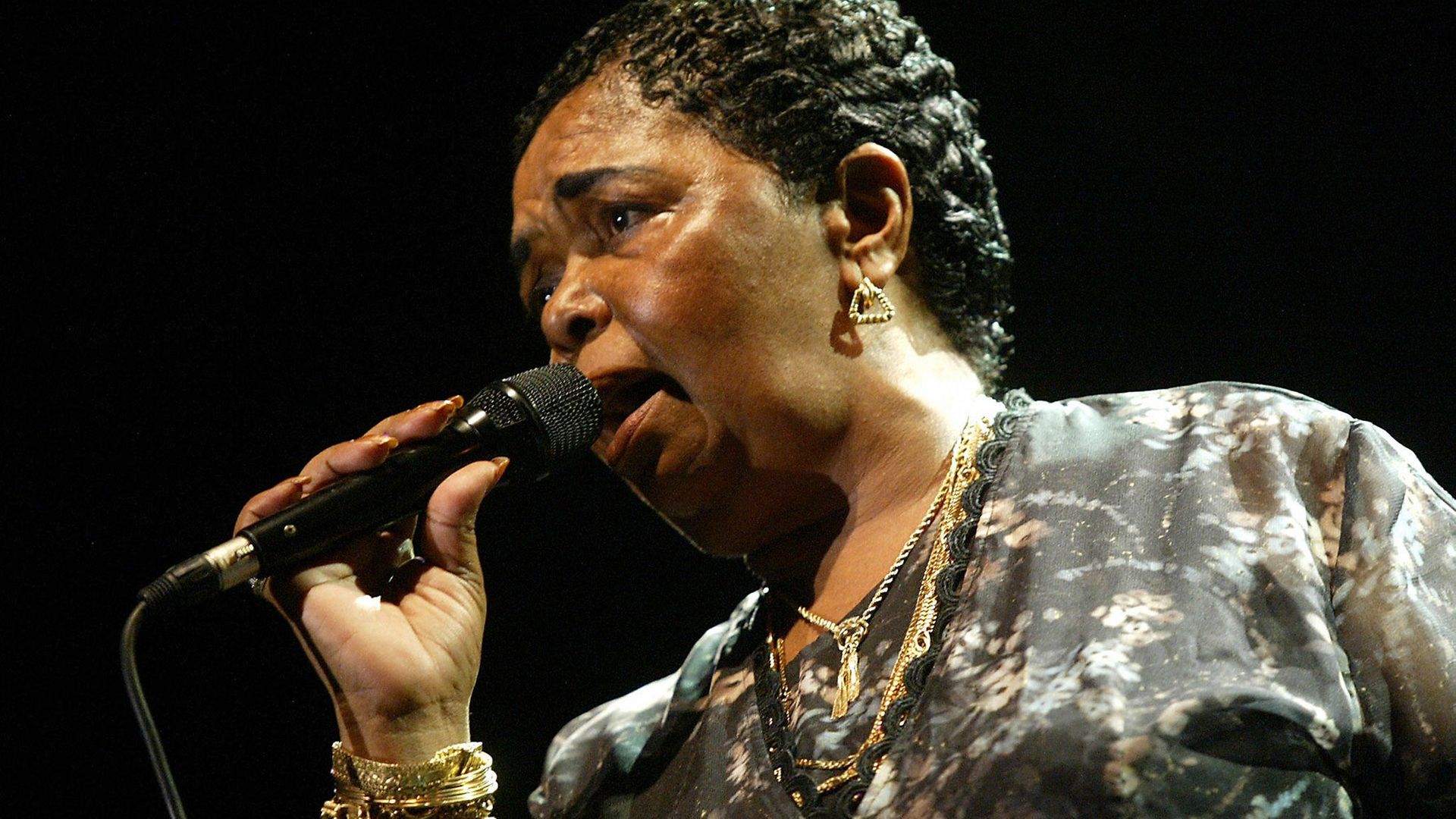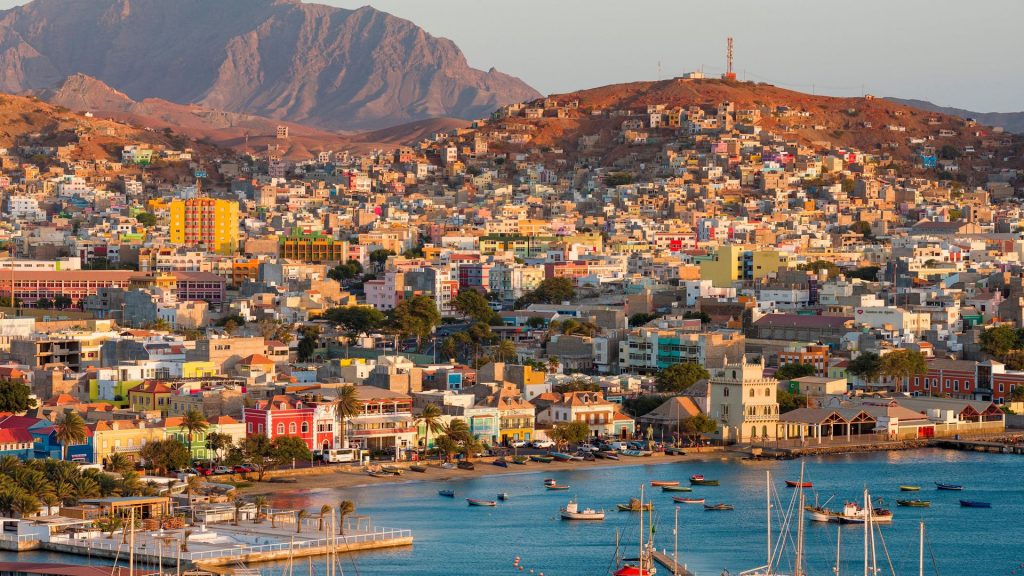
An archipelago of 10 islands 350 miles off the coast of Senegal, Cape Verde is a place that was made by slavery. Its islands of jungle, mountains and volcanic landscapes were uninhabited until the Portuguese arrived in 1462, but it then became a key staging post in the transatlantic slave trade, developing a population of mixed European and African descent and its own unique culture.
Two hundred years after the arrival of the Portuguese, human cargo began to be shipped directly across the Atlantic, bypassing the islands and sending them into economic decline. The 18th century saw the then capital, Santiago, sacked by the French, and drought and famine ravage the country.
Darwin found an unspoilt, if substantially barren country when he made an unplanned stop at Cape Verde during his voyage on the Beagle in the 1830s, but the steam age saw the islands become an important hub as a fuelling stop for ships, with a British East India Company coaling station set up at Mindelo, the archipelago’s second city on the northern, windward island of São Vicente, which soon grew into a key port, as well as the cultural capital of the islands.
As tourism later became a major industry from the 1960s, Mindelo became a destination for visiting cruise ships, but this new age came against a background of a lack of investment in the colony by the Salazar regime back in Portugal and then the travails of independence, which came in 1975 and saw colonial status replaced by a Soviet-backed one-party state.
While Cape Verdeans had been leaving the islands for a better life for centuries before independence, and the experience of emigration had become integral to the culture, emigration accelerated sharply in the late 1970s. Today, while some 500,000 people live on the archipelago itself, as many as a million Cape Verdeans live outside of the country, with Portugal, the United States, the Netherlands and Spain having large immigrant communities.
Cape Verde has its own musical genre that bears witness to how the experience of separation – whether through enslavement or emigration – is ingrained in the islands’ soul. Morna is the melancholy and melodic genre with much in common with Portuguese fado, and Mindelo is its home.
Cesária Évora, dubbed the ‘Queen of Morna’, was born in Mindelo in the early 1940s but was approaching 50 by the time she got any recognition outside of her tiny home country. Orphaned at 10, by her mid-teens she was singing in the harbourside bars of Mindelo’s Porto Grande Bay, and later performed on the cruise ships that docked there.

For the next three decades Évora raised three children in obscurity. Then, in 1985, the decade-older ‘King of Morna’, Bana, another Mindelo native who had made it big in Senegal in the 1960s before going to Europe, invited her to Lisbon to perform. Then in her 40s, it was the first time that she had ever left the island (having never learned to swim, she had always been truly island-bound).
During that first European trip, Évora met José da Silva from the Cape Verdean capital Praia but then living in Paris. His samba group Sun of Cap, made up of Cape Verdean ex-pats, had made three albums, but he was at that time working on the French railways.
Inspired by Évora’s bewitching voice, he had another attempt at musical success and founded the Lusafrica label in order to put out her debut LP. Its title, La Diva Aux Pieds Nus (‘The Barefoot Diva’), was a reference to Évora’s trademark shoeless performances and bound to capture imaginations.
Évora’s debut closed with the heartfelt ode to her homeland Cabo Verde Terra Estimada (‘Cape Verde, Dear Land’), and despite becoming rapidly known in France – Le Monde insisted “She belongs to the aristocracy of bar singers” – and getting a distribution deal with BMG which introduced her to the rest of the world, her lyrics, sung in Cape Verdean Creole, were always concerned with the landscape and people of her home.
Évora’s version of the 1950s song Sodade – a nostalgic lament for the homeland in the Brazilian-influenced coladeira style native to São Vicente – became one of her most celebrated songs, while her 1995 self-titled album opened with another love letter to Cape Verde, Petit Pays.
Évora also always surrounded herself with musicians from Cape Verde, even as she toured the world. José da Silva remained her producer and manager for life, and she worked with the Mindelo-born cousins, guitarists Tito Paris and Rufino Almeida, known as Bau, as well as the São Vicente-raised musician and songwriter Teófilo Chantre.
After falling ill in Paris in 2010, Évora died in Mindelo the following year, aged 70. She had symbolised the practicality and lack of pretension of Cape Verdeans, her plaintive and delicate tone belying her no-nonsense attitude, comfortable-in-her-own-skin matronliness and hard living (she used to pause on stage for a cigarette and rum while her band busied themselves with an instrumental).
Her face has graced Cape Verdean postage stamps and bank notes and Mindelo airport bears her name.
Morna belonged to the pre-independence era, but when independence came, according to Mindelo-born musician Val Xalino, “People wanted to hear something different. They wanted the synthesiser!”
Indeed, while Cape Verdean immigrants to Europe had been musically active for some time – the ensemble Voz de Cabo Verde founded in Lisbon in 1960 being a self-explanatory project – from the late 1970s a new generation embraced the electronic instruments that were available in Europe to make a new music.
Xalino, born into a Mindelo musical dynasty and one of the many young Cape Verdeans to leave for Europe in those post-independence years, ending up in Gothenburg in 1977, was one of the innovators of this new propulsive and energised music.
His 1985 debut LP Dilema D’Imigração (‘The Dilemma of Immigration’) cast Cape Verdean rhythms in synth and drum machine tones. The cover featured the unmistakable landmark of Monte Cara (‘Face Mountain’ – it resembles a human profile) as seen from Mindelo on the other side of a ship-filled Porto Grande Bay.
Tchiss Lopes, meanwhile, had left São Vicente in 1980 with dreams of making it as a footballer in Lisbon. He ended up in Rome and wrote the frenetic electric funaná song Stranger Já Catem Traboi about the struggles of the Cape Verdean community there.
Having left São Vicente at the age of 18, Jovino Dos Santos was at that time playing danceable music for the Cape Verdean community of Paris, while in Lisbon São Nicolau’s Paulino Vieira was playing keyboards with a rebooted Voz de Cabo Verde.
He forged what has been called “the cosmic sound of Cape Verde”, and while Lisbon’s Monte Cara club, opened in the late 1970s, was named for the pined-for Mindelo landscape, the music played inside was this new, electronic-backed music of Cape Verdean flavour but cooked up in Europe.
Today, Cape Verdean music is represented by the many European-born artists of Cape Verdean descent coming out of the vibrant scene in Lisbon, as well as younger artists born on the islands, like enchanting singer Jenifer Solidade. But wherever it comes from, this is music that contains hundreds of years of history of disparate cultures brought together.










